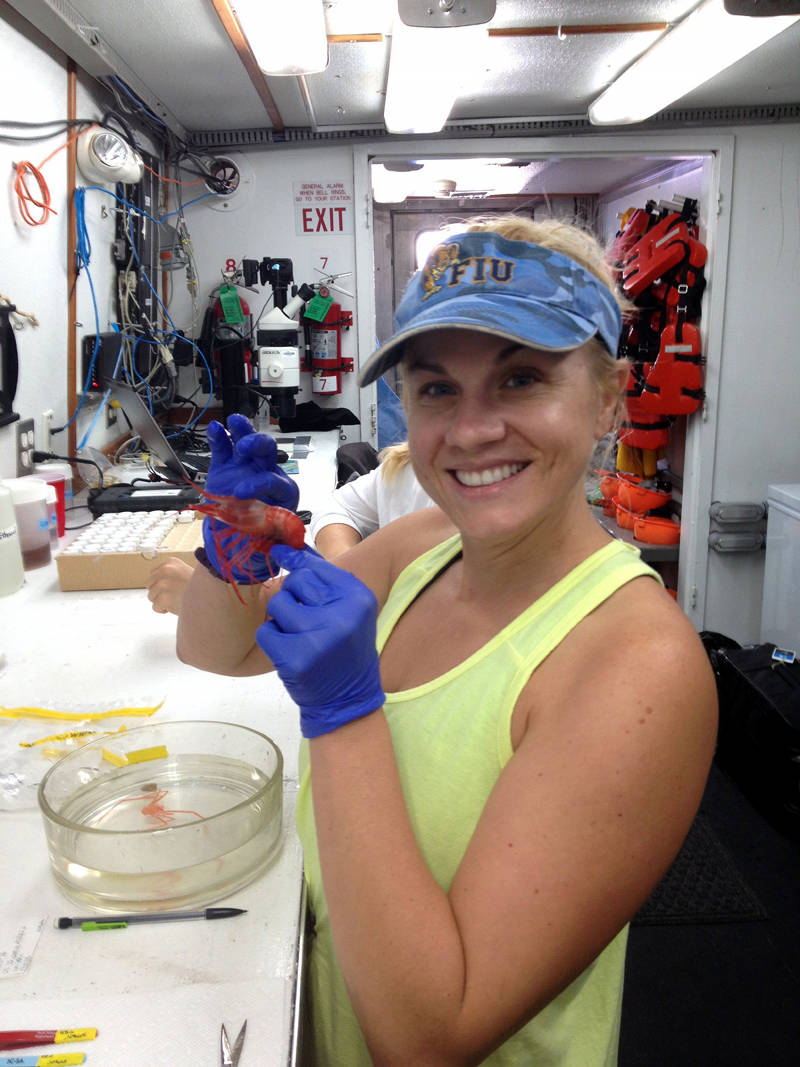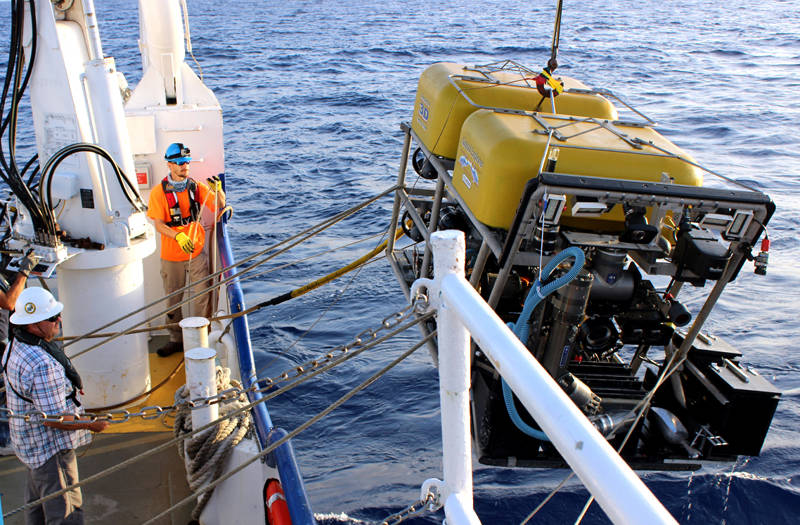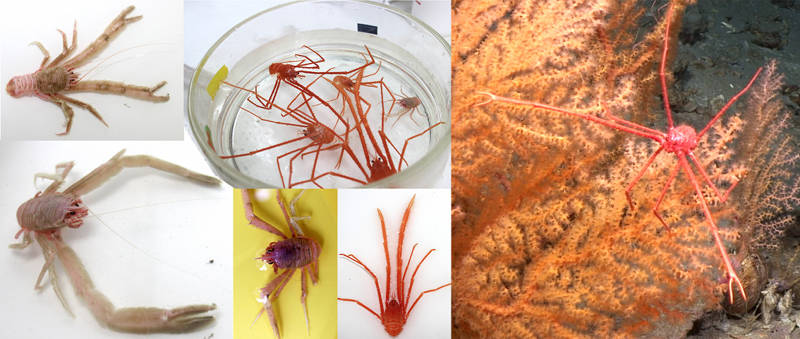
ByJorge L. Pérez-Moreno - Ph.D. Student, Department of Biological Sciences, Florida International University-Biscayne Bay Campus
July 18, 2015

The fourth day of the expedition arrives and once again we are ready to explore that alien world deep beneath the surface of the Gulf. Image courtesy of NOAA Bioluminescence and Vision on the Deep Seafloor 2015. Download larger version (jpg, 1.8 MB).
As part of the Bracken-Grissom team, I am studying the vision of crustaceans in the deep sea. Specifically, we are interested in the visual pigments that enable crustaceans to detect light. Given the prevalence of bioluminescence in the ocean, particularly in deep-sea ecosystems, it is thought that these creatures have also adapted to distinguish between different kinds of light for a variety of purposes. This might include predator avoidance, communication, and even color-coding of their habitat and/or food by the type of bioluminescence these emit.

Dr. Bracken-Grissom and one of our shrimp specimens. Image courtesy of NOAA Bioluminescence and Vision on the Deep Seafloor 2015. Download larger version (jpg, 522 KB).
Ongoing experiments by other teams on this research cruise are determining which different wavelengths of light deep-sea animals can detect and produce. Dr. Bracken-Grissom and I are working on a similar research question, except that rather than probing crustaceans and measuring their response to light, we are looking directly at the genes that they express in their eyes by extracting and sequencing the RNA contained in them (a nucleic acid, like DNA, that carries “messages” from the DNA to other parts in the cell about what specific proteins to make).

Carefully deploying the ROV Global Explorer to go and collect some deep sea crustaceans. Image courtesy of NOAA Bioluminescence and Vision on the Deep Seafloor 2015. Download larger version (jpg, 123 KB).
Working on a cruise like this and collecting the crustaceans that we study with a remotely operated vehicle (ROV) is actually perfect for our kind of study. In order to look at the visual genes that are expressed by these deep-sea creatures, we need to make sure that they are brought up to the surface alive and as intact as possible, as RNA degrades much more rapidly than DNA. This is often very challenging when trawls and nets are used as collection methods, as on occasions organisms can become quite damaged.
The ROV Global Explorer enables us to collect crustaceans without any harm to them or their environment. We can also pick and choose only those we need and avoid unnecessary by-catch. So far it has worked great!

Squat lobsters after collection being studied (left) and in their natural habitat (right). Image courtesy of NOAA Bioluminescence and Vision on the Deep Seafloor 2015. Download larger version (jpg, 738 KB).
Not only have we been able to collect some really cool crustaceans for our study, but we have also discovered that these deep-sea ecosystems are inhabited by a large abundance of crustaceans. We have found shrimp as expected, possibly Heterocarpus sp., but definitely the most common macro-crustaceans appear to be squat lobsters.
There are several species living down there, of which some live on the seafloor and some like to hangout on corals and other structure. We even think that some of these species had never been reported in the Gulf before!

Crabs intertwined. Image courtesy of NOAA Bioluminescence and Vision on the Deep Seafloor 2015. Download larger version (jpg, 324 KB).